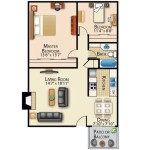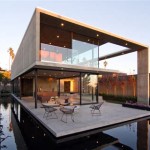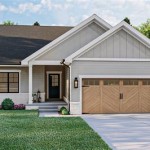Cat house design plans are detailed instructions that guide the construction of a custom shelter for cats. These plans provide step-by-step instructions, material lists, and diagrams to ensure that the cat house meets the specific needs of the cat and its owner. For instance, an outdoor cat house may require weatherproofing and insulation features, while an indoor cat house may prioritize space optimization and aesthetic appeal.
Creating a comfortable and stimulating environment for cats is essential for their well-being. A well-designed cat house provides shelter from the elements, a place to sleep and relax, and opportunities for play and exploration. By following comprehensive cat house design plans, cat owners can create a personalized haven that meets the unique needs of their feline companions.
In the following sections, we will delve into the various aspects of cat house design, including factors to consider, types of designs, and detailed instructions for building your own cat house. Whether you’re a seasoned DIY enthusiast or a first-time cat owner, these plans will empower you to create a cozy and enriching home for your beloved pet.
When designing a cat house, there are several important points to consider:
- Size and dimensions
- Materials and durability
- Ventilation and insulation
- Accessibility and entry points
- Comfort and functionality
- Safety and stability
- Aesthetics and design
- Budget and resources
- Cat’s needs and preferences
By carefully considering these factors, you can create a cat house that is both functional and aesthetically pleasing, providing a comfortable and enriching environment for your feline friend.
Size and dimensions
The size and dimensions of the cat house are crucial factors to consider. The house should be large enough to accommodate the cat comfortably, but not so large that it becomes overwhelming or difficult to maneuver. The following points should be taken into account when determining the appropriate size:
- Cat’s size and breed
The size of the cat will determine the minimum dimensions of the house. Larger breeds, such as Maine Coons and Ragdolls, will require a more spacious house than smaller breeds, such as Siamese and Persians.
- Number of cats
If you have multiple cats, you will need to consider the size of the house accordingly. A larger house with multiple entry points and separate sleeping areas will be necessary to ensure that all cats have enough space and privacy.
- Intended use
Consider how the cat will be using the house. If it will be used primarily for sleeping, a smaller house may be sufficient. However, if it will also be used for playing, exploring, or hiding, a larger house with more vertical space and features will be necessary.
- Available space
The size of the house should also be proportionate to the available space in your home. A large cat house in a small room can feel cramped and overwhelming, while a small cat house in a large room may not provide enough stimulation or privacy.
As a general rule, the cat house should be at least 24 inches long, 18 inches wide, and 18 inches high. However, it is always best to measure your cat and the available space before making a final decision.
Materials and durability
The materials used to construct the cat house will have a significant impact on its durability, weather resistance, and overall longevity. Consider the following factors when selecting materials:
Outdoor vs. indoor use
If the cat house will be used outdoors, it is important to choose materials that are weather-resistant and durable. Pressure-treated wood, cedar, and vinyl are good options. Indoor cat houses can be made from a wider variety of materials, including fabric, cardboard, and even recycled materials.
Cat’s scratching habits
If your cat is known for scratching, choose materials that are scratch-resistant, such as sisal rope, corrugated cardboard, or heavy-duty fabric. Avoid using materials that can easily be torn or damaged by scratching.
Maintenance and cleaning
Consider how easy the cat house will be to clean and maintain. Smooth surfaces are easier to wipe down and disinfect than textured surfaces. Removable covers and washable materials can also make cleaning easier.
In general, the best materials for cat houses are those that are durable, weather-resistant, scratch-resistant, and easy to clean. By selecting the right materials, you can ensure that your cat house will provide a safe and comfortable environment for your feline friend for many years to come.
Ventilation and insulation
Proper ventilation and insulation are essential for maintaining a comfortable and healthy environment inside the cat house. Good ventilation will help to prevent the buildup of moisture and odors, while insulation will help to regulate the temperature inside the house, keeping your cat warm in the winter and cool in the summer.
- Ventilation
The cat house should have multiple ventilation openings to allow for proper airflow. These openings should be placed on opposite sides of the house to create a cross-breeze. The openings should be large enough to allow air to circulate freely, but small enough to prevent drafts. You can also install a small fan inside the house to help circulate the air.
- Insulation
The cat house should be insulated to help regulate the temperature inside the house. Insulation will help to keep the house warm in the winter and cool in the summer. There are a variety of insulation materials available, such as fiberglass, foam, and recycled materials. Choose an insulation material that is appropriate for the climate in your area.
- Avoid using materials that can trap moisture
When selecting materials for the cat house, avoid using materials that can trap moisture, such as carpet or fabric. These materials can create a breeding ground for bacteria and mold, which can be harmful to your cat’s health.
- Regular cleaning
Regularly clean the cat house to remove any dirt, debris, or hair that may accumulate. This will help to keep the house fresh and free of odors.
By following these tips, you can ensure that your cat house is well-ventilated and insulated, providing a comfortable and healthy environment for your feline friend.
Accessibility and entry points
The cat house should be easily accessible to your cat, regardless of its age or mobility. The entry points should be large enough for your cat to enter and exit comfortably, and they should be placed at a height that is easy for your cat to reach.
- Multiple entry points
Provide multiple entry points to the cat house, especially if it is large or has multiple levels. This will allow your cat to enter and exit the house from different directions, which can be helpful if the house is placed in a corner or against a wall.
- Appropriate height
The entry points should be placed at a height that is easy for your cat to reach. For most cats, this means that the entry points should be no more than 8 inches off the ground. If your cat is older or has mobility issues, you may need to lower the entry points or provide a ramp.
- Non-slip surface
The surface around the entry points should be non-slip to prevent your cat from slipping and falling when entering or exiting the house.
- Clear access
Make sure that the area around the entry points is clear of any obstacles that could make it difficult for your cat to enter or exit the house.
By following these tips, you can ensure that your cat house is easily accessible to your feline friend, providing a safe and comfortable place for them to rest and play.
Comfort and functionality
The comfort and functionality of the cat house are essential factors to consider when designing the plans. The house should provide a safe and comfortable place for your cat to sleep, rest, and play.
- Soft bedding
The cat house should have soft and comfortable bedding. This will provide a cozy place for your cat to sleep and rest. You can use a variety of materials for the bedding, such as fleece, blankets, or pillows. Make sure that the bedding is machine-washable so that you can keep it clean.
- Perches and hiding places
Cats love to climb and perch on high places. Providing perches and hiding places inside the cat house will give your cat a sense of security and privacy. You can use a variety of materials to create perches and hiding places, such as cat trees, cardboard boxes, or even old clothes.
- Scratching post
Cats need to scratch to keep their claws healthy and to mark their territory. Providing a scratching post inside the cat house will help to prevent your cat from scratching your furniture. You can use a variety of materials to make a scratching post, such as sisal rope, cardboard, or carpet.
- Toys
Cats need mental and physical stimulation to stay healthy and happy. Providing toys inside the cat house will help to keep your cat entertained and active. You can use a variety of toys, such as catnip toys, puzzle toys, or interactive toys.
By following these tips, you can ensure that your cat house is comfortable and functional, providing a safe and enriching environment for your feline friend.
Safety and stability
The cat house should be safe and stable to prevent injuries to your cat. The following factors should be considered when designing the cat house for safety and stability:
- Sturdy construction
The cat house should be constructed using sturdy materials that can withstand the weight of your cat and any activities that your cat may engage in, such as jumping or climbing. Avoid using materials that are flimsy or easily damaged.
- Secure foundation
The cat house should have a secure foundation to prevent it from tipping over. The foundation can be made of a variety of materials, such as wood, concrete, or metal. Make sure that the foundation is level and stable.
- Non-toxic materials
The cat house should be made of non-toxic materials that are safe for your cat. Avoid using materials that contain harmful chemicals or that can splinter or break easily.
- Smooth edges
The cat house should have smooth edges to prevent your cat from being injured. Sand down any sharp edges or splinters before placing the cat house in your home.
By following these tips, you can ensure that your cat house is safe and stable, providing a secure and comfortable environment for your feline friend.
Aesthetics and design
The aesthetics and design of the cat house are important factors to consider, as they can affect the overall look and feel of your home. The cat house should be designed to complement the style of your home and to fit in with your existing dcor.
- Color and finish
The color and finish of the cat house should be chosen to match the style of your home. If you have a modern home, you may want to choose a cat house with a sleek and contemporary design. If you have a more traditional home, you may want to choose a cat house with a more classic design.
- Shape and size
The shape and size of the cat house should be chosen to fit the space available in your home. If you have a small home, you may want to choose a smaller cat house. If you have a large home, you may want to choose a larger cat house with multiple levels and features.
- Materials
The materials used to construct the cat house should be chosen to match the style of your home and to withstand the wear and tear of everyday use. If you have a modern home, you may want to choose a cat house made of metal or glass. If you have a more traditional home, you may want to choose a cat house made of wood or fabric.
- Details
The details of the cat house, such as the trim, hardware, and accessories, can be used to add a personal touch to the design. You can choose details that match the style of your home or that reflect your cat’s personality.
By following these tips, you can design a cat house that is both aesthetically pleasing and functional, providing a comfortable and stylish home for your feline friend.
Budget and resources
The budget and resources available to you will have a significant impact on the design of your cat house. If you have a limited budget, you may need to choose less expensive materials and a simpler design. However, if you have more resources available, you can choose higher quality materials and a more elaborate design.
The following are some tips for designing a cat house on a budget:
- Use recycled materials
You can save money by using recycled materials to build your cat house. For example, you can use old wood pallets, cardboard boxes, or even old clothes to create a unique and stylish cat house.
- Shop around for materials
Before you purchase materials for your cat house, shop around to find the best prices. You may be able to find discounts on materials at home improvement stores or online retailers.
- Build a smaller cat house
The size of the cat house will also affect the cost. A smaller cat house will require less materials and will be less expensive to build.
- Choose less expensive materials
There are a variety of less expensive materials that you can use to build a cat house, such as plywood, MDF, or even fabric. These materials are durable and easy to work with, and they can help you save money on your project.
If you have more resources available, you can choose higher quality materials and a more elaborate design for your cat house. For example, you could use solid wood, glass, or even stone to create a truly unique and luxurious cat house.
No matter what your budget or resources, you can design and build a cat house that is both stylish and functional. With a little planning and creativity, you can create a comfortable and inviting home for your feline friend.
In addition to the cost of materials, you will also need to consider the cost of tools and labor. If you are not comfortable building the cat house yourself, you may need to hire a contractor to do the work for you. The cost of labor will vary depending on the complexity of the design and the location of your home.
Cat’s needs and preferences
When designing a cat house, it is important to consider the needs and preferences of your cat. Cats have unique instincts and behaviors that should be taken into account when creating a comfortable and enriching environment for them.
- Privacy and security
Cats are instinctively drawn to enclosed spaces where they can feel safe and secure. The cat house should provide a private retreat where your cat can rest, sleep, and hide away from potential threats. Consider adding features such as a covered entrance, multiple chambers, or perches that allow your cat to survey their surroundings while feeling protected.
- Vertical space
Cats are natural climbers and enjoy being able to perch on high places. Incorporating vertical space into the cat house design, such as shelves, ramps, or a cat tree, will provide your cat with opportunities to climb, jump, and explore. This can help to satisfy their natural instincts and keep them active and entertained.
- Scratching surfaces
Scratching is an essential behavior for cats that helps to maintain their and mark their territory. Providing scratching surfaces within the cat house will help to prevent your cat from scratching your furniture or other belongings. Consider using materials such as sisal rope, cardboard, or carpet to create designated scratching areas.
- Sensory stimulation
Cats are curious creatures that enjoy sensory stimulation. Incorporating elements such as different textures, colors, and sounds into the cat house design can help to keep your cat engaged and entertained. Consider adding features such as a scratching post with a built-in toy, a window that provides a view of the outdoors, or a cozy bed with a soft and inviting texture.
By considering the needs and preferences of your cat, you can create a cat house that provides a comfortable, stimulating, and enriching environment for your feline friend.










Related Posts








